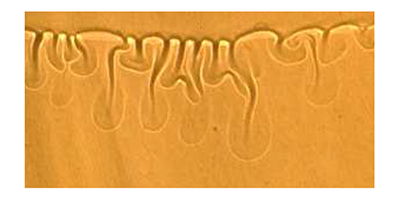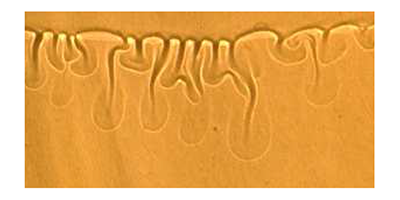Convection Speeds Up on a Slant
A potential strategy for reducing greenhouse gas emissions is to capture carbon dioxide ( CO2) and store it underground. One of the most promising storage options for carbon capture and sequestration (CCS) is offered by deep saline aquifers, which are brine-filled reservoirs covered by a cap of impermeable rocks. A new experimental study reported in a Rapid Communication in Physical Review E looks at how convection in the CO2-brine mixture can help trap the greenhouse gas. In particular, the authors find that a sloping saline formation could promote convection and thus provide better storage than a horizontally level one.
Deep saline formations offer a large storage capacity. Ideally, the carbon dioxide will dissolve and get trapped into the brine. However, CO2—being less dense than brine—will rise upward and may form a separate top layer that restricts dissolution, except at the boundary between the two fluids. In this situation, convection could provide much-needed stirring. Previous studies have shown that, under certain conditions, CO2-rich brine at the boundary will sink downwards in convective plumes that force fresh brine upward into the CO2.
Peichun Amy Tsai and her colleagues from Princeton University, New Jersey, investigated convection in a laboratory model of a saline formation. Unlike previous work, they considered the effect of slanted boundaries, as found at some potential CCS sites. The team poured water and propylene glycol (as stand-ins for CO2 and brine) into a pore-filled container with transparent walls. They filmed the formation of convective plumes and found that tilting the container by 20 degrees increased the rate of dissolution by 20 percent. This enhancement is analogous to the faster sedimentation of suspended particles in a tilted tube (known as the Boycott effect). – Michael Schirber





